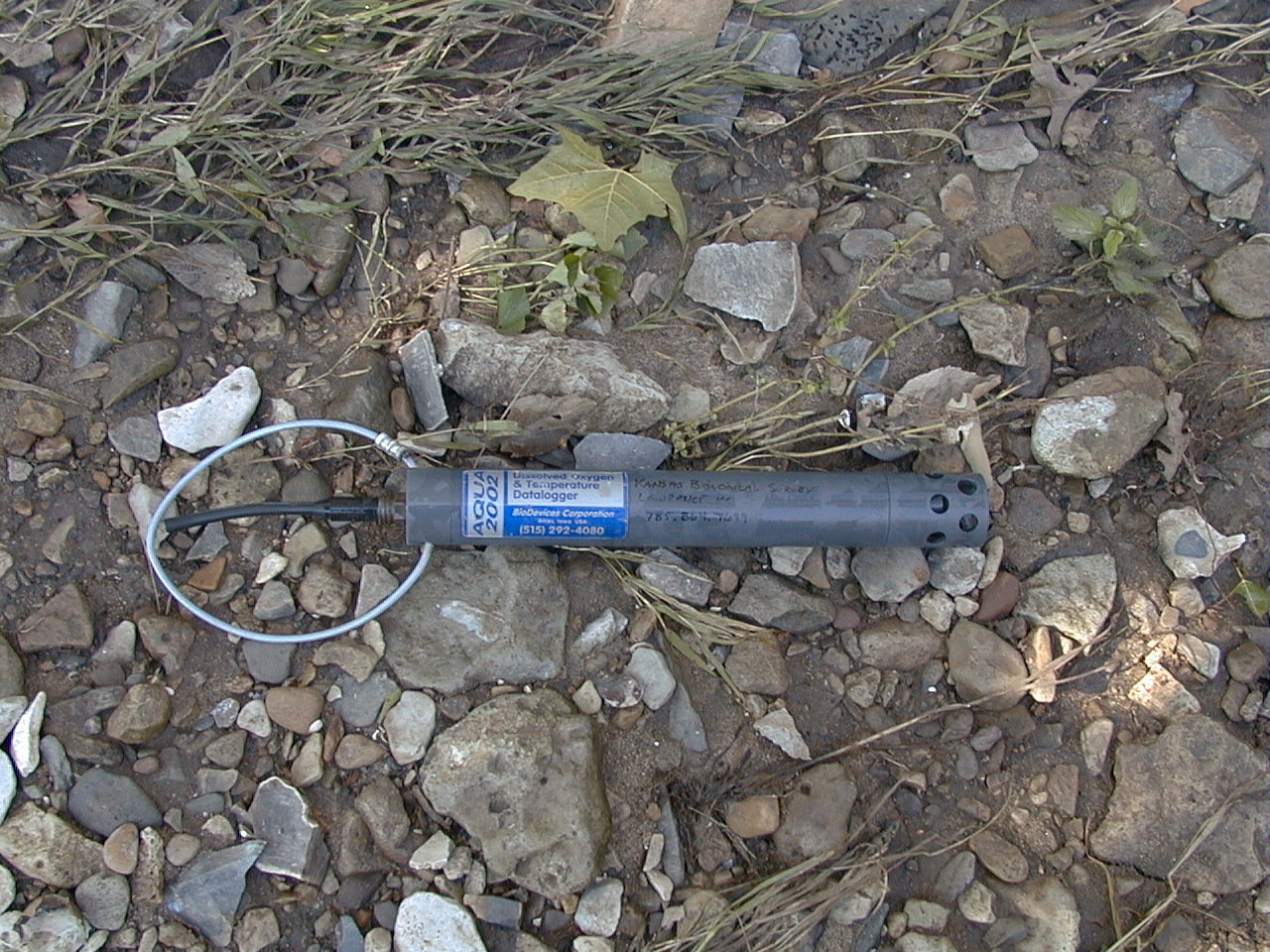Start Date: 1999
End Date: 2001
Full Citation:
USEPA, 1999 - 2001. "Dissolved Oxygen Fluctuation Regimes in Streams of the Western Corn Belt Plains Ecoregion." PI: D. Huggins.
Category:
- Aquatic
Associated with the KU Field Station: No
Research Summary:
Diel variability in dissolved oxygen (DO) may explain some of the observed variability in biological response to increased nutrients. The low levels of DO may result in increased mortality of stream biota, thereby decreasing the overall community diversity in the affected stream reach. Dissolved oxygen can reach its lowest point early in the morning, thereby reducing the chance of direct observation of resulting deaths, and so it has been seldom studied. To resolve this sampling problem the CPCB instrumented 57 streams in the Western Corn Belt Plains with continuous DO and temperature data loggers. These instruments allowed us to capture ten- to fourteen-day “snapshots" of the diel fluctuation in DO concentrations.
Through this initial research we have expanded the project as the complexity of the issues increased. In addition to examining the DO concentrations, we have created the Production Calculator tool for calculating primary production and community respiration from the continuous DO data that is based on the theories of Odum (1956). This method accounts for various physical factors (e.g. reaeration, altitude, temperature, etc.) that influence the rates of production and respiration. (Odum, H. T. 1956. Primary production in flowing waters. Limnology and Oceanography 1(2): 102-117.)
As the research expands, we have become aware of possible macrohabitat affects on DO and production. In an effort to further explore and ultimately understand the relationships between the physical stream habitats and oxygen, in 2003 the CPCB began a long-term stream reach study of two Kansas streams, Soldier Creek in Jackson County and Cedar Creek in Johnson County. By instrumenting these reaches with multiple loggers that define and differentiate between the extent of the macrohabitats (i.e. runs, riffles, and pools) and applying a two station approach to calculating primary production and community respiration, we hope to define the areas of greatest DO fluctuation and stream production.
Huggins, D., J. Anderson. 2003. Production calculator, Version 1.5 Operations manual. Kansas Biological Survey, Lawrence, KS Report No. 131:24 pp.
Huggins, D., J. Anderson. 2005. Dissolved oxygen fluctuation regimes in streams of the Western Corn Belt Plains ecoregion. Kansas Biological Survey, Lawrence, KS Report No. 130:57 pp.
Images:
